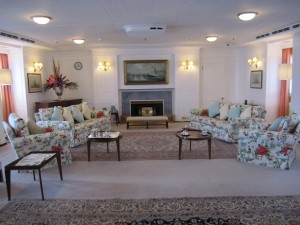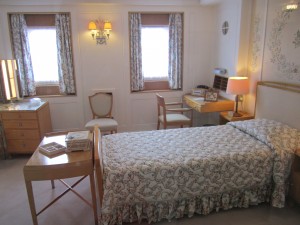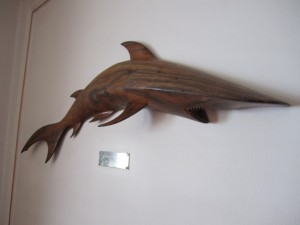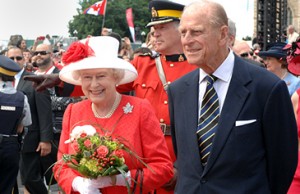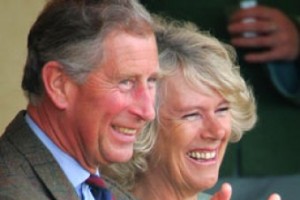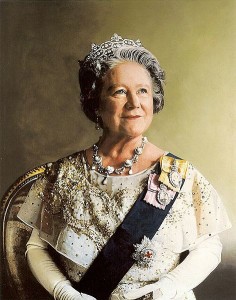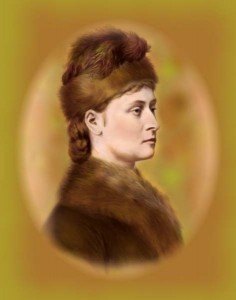
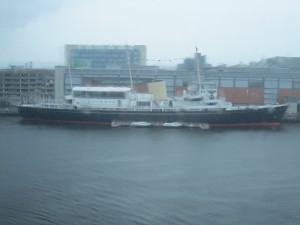 The Queen’s former yacht, Britannia, decommissioned in 1997, is not only a tourist attraction today but was voted a top tourist attraction in the United Kingdom by Trip Advisor, receiving 300,000 visitors per year. The Britannia’s last harbour cannot be described as majestic. The ship is docked behind the Ocean Terminal shopping mall in Leith, accessible via escalator to the second floor and a walk through the mall food court. The view from the bridge is of a cruise ship docked in the harbour and the shuttle buses on the pier to transport the passengers into Edinburgh.
The Queen’s former yacht, Britannia, decommissioned in 1997, is not only a tourist attraction today but was voted a top tourist attraction in the United Kingdom by Trip Advisor, receiving 300,000 visitors per year. The Britannia’s last harbour cannot be described as majestic. The ship is docked behind the Ocean Terminal shopping mall in Leith, accessible via escalator to the second floor and a walk through the mall food court. The view from the bridge is of a cruise ship docked in the harbour and the shuttle buses on the pier to transport the passengers into Edinburgh.
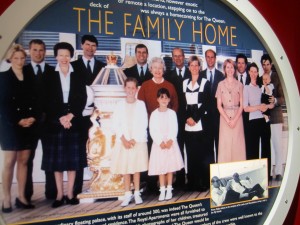 There are complimentary audio tours, an onboard tea room and an exit through a gift shop selling Britannia t-shirts. Families from around the world arrive by the double decker bus load from the Royal Mile, allowing their children to take their turn at the helm. Parties of cruise ship passengers make their way around the pier, clutching the enormous umbrellas from their staterooms, emblazoned with name of their cruise line. When wind and rain make the journey into Edinburgh uninviting, they visit the Britannia.
There are complimentary audio tours, an onboard tea room and an exit through a gift shop selling Britannia t-shirts. Families from around the world arrive by the double decker bus load from the Royal Mile, allowing their children to take their turn at the helm. Parties of cruise ship passengers make their way around the pier, clutching the enormous umbrellas from their staterooms, emblazoned with name of their cruise line. When wind and rain make the journey into Edinburgh uninviting, they visit the Britannia.
Inside Britannia’s royal apartments, the modern world is forgotten. The Queen launched the ship in 1953 and the interiors reflect the aesthetic of the early decades of her reign. In the state drawing room, where the Queen entertained foreign dignitaries in port and gathered with her family at sea, there is a set of furniture that was a gift from the Swedish royal family in 1956. The Queen personally selected the chintz sofa and armchair covers. Off duty, the royal family gathered here to play cards and board games and Princess Margaret, Princess Alexandra and Princess Diana all took their turn at the piano. The state dining room seated thirty two people with extra tables available from the previous royal yacht, Victoria and Albert III, for especially large banquets.
The Queen and the Duke of Edinburgh occupied simple private cabins on the Britannia, two adjoining bedrooms on the starboard side with twin beds. The Queen preferred floral decoration while Prince Philip favoured dark timber furniture and requested pillows that did not have lace borders. The bedrooms across the hall were originally occupied by Prince Charles and Princess Anne as children but when Charles and Diana spent their honeymoon onboard the Britannia, his former bedroom was transformed into a honeymoon suite, complete with the yacht’s only double bed.
The focus of the exhibition is the role Britannia played in the past but there are hints of how the absence of a royal yacht affects the Queen’s royal engagements in the present. The gifts from the Commonwealth nations that now adorn the walls of the dining room reveal how a royal yacht helped the Queen engaged with a worldwide maritime family of nations. The sixteen Commonwealth realms where the Queen is Head of State all have maritime traditions. The yacht allowed the Queen to visit her Pacific and Caribbean realms more frequently, stopping at several islands in a single tour.
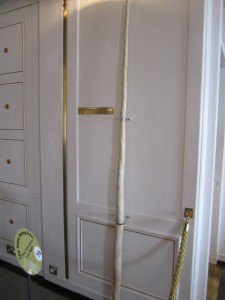
Narwhal tusk presented to the Queen by Canadian Prime Minister Pierre Trudeau in Frobisher Bay, 1970
When the Queen decommissioned the Britannia, she observed, “Looking back over forty-four years we can all reflect with pride and gratitude upon this great ship which has served the country, the Royal Navy and my family with such distinction. Britannia has provided magnificent support to us throughout this time, playing such an important role in the history of the second half of the century.” There is still a case to be made for the importance of a royal yacht to a global Commonwealth.
Next: The Palace of HolyroodHouse in Edinburgh
